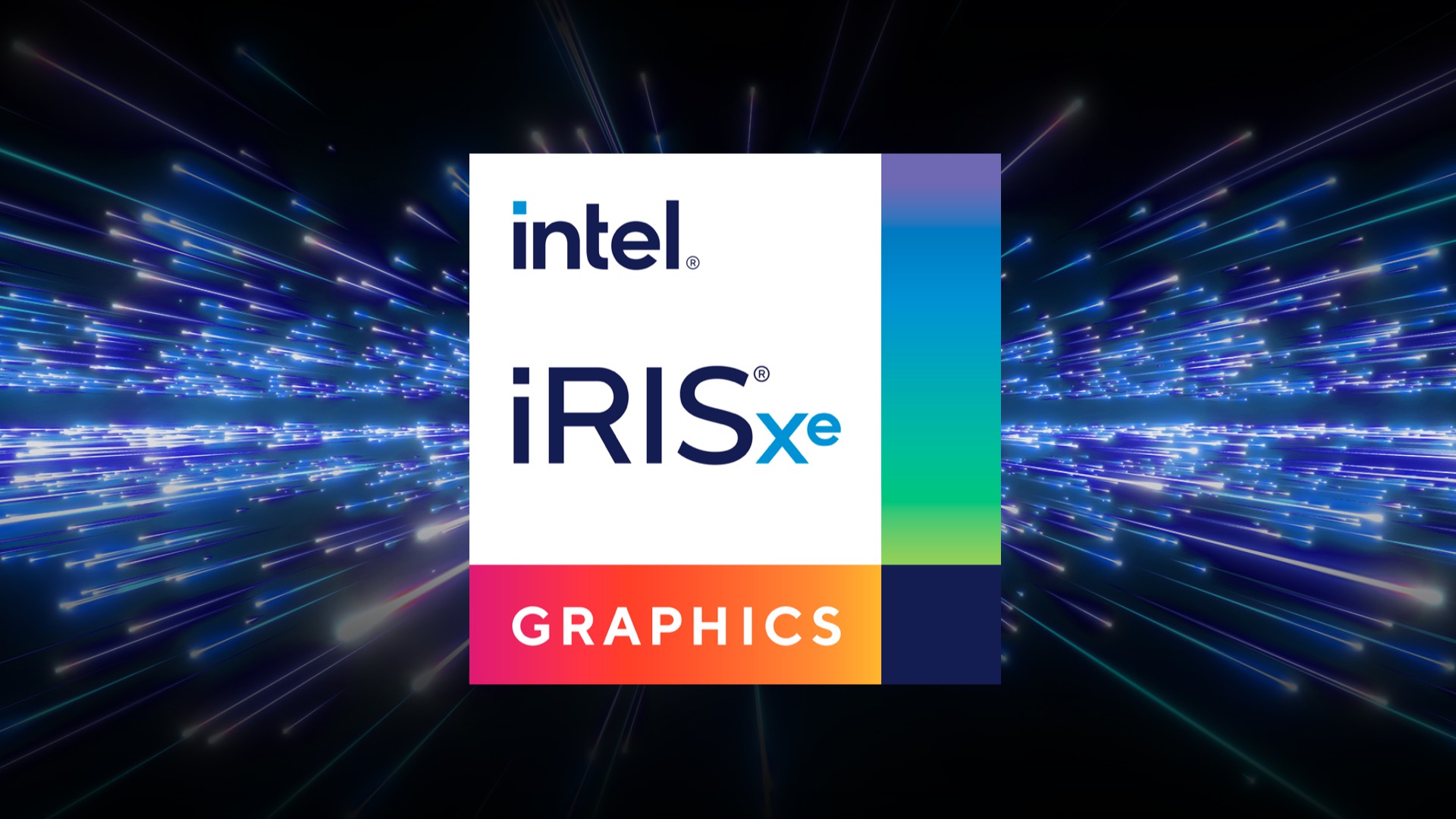Intel Iris Xe Graphics was a pretty notable advancement in integrated GPUs from Intel, commonly found in the upper tier of the company’s 11th, 12th, and 13th gen mobile processors. This technology was pitched as a significant leap in performance for integrated graphics on notebooks and ultra-slim / ultra-portable devices and it really delivered (for the time).
It doesn’t compare as well to discrete GPU equivalents because of how far along we’ve come on that front, but it does hold its own (even today) on the mobile side. Compared to previous gen iGPUs the Iris Xe line offered much better gaming and content creation solutions and even the ability to decode 8K video with support for up to three 4K HDR displays simultaneously. Iris Xe Graphics elevated the standard for what integrated graphics could achieve and you can see that legacy in new releases from both Intel and AMD.
Understanding Intel Iris Xe Graphics
Intel Iris Xe Graphics is Intel’s integrated graphics solution found in many recent laptops and some desktop processors. These graphics processors are built into the CPU itself. Let’s break down what this means for your computer usage.
What is Integrated Graphics?
Integrated graphics are different from dedicated graphics cards. Here’s a quick comparison:
| Feature | Integrated Graphics | Dedicated Graphics Card |
|---|---|---|
| Description | Graphics built into the CPU | Additional card installed in your computer |
| Performance | Suitable for basic tasks and casual gaming | Designed for high-performance gaming and graphics-intensive work |
| Cost | Typically included with the CPU | More expensive |
| Power Consumption | Lower power usage | Can consume significantly more power |
What Card Does An Iris Xe Equate To
It’s hard to compare the performance you’d expect from the Iris XE to an equivalent discrete (desktop) GPU because they aren’t really designed to be the same thing. If you look at benchmarks the Irix XE would measure somewhere around the level of an NVIDIA GT 1030 and well below something like a GTX 950. Obviously, in modern-day desktops, those cards would be considered way out of date, but things are different in portables.
What Are Some Processors That Have Irix Xe In Them
Some processors that support Intel Iris Xe Graphics include:
- Core i5-12500H12 cores, 16 threads, 2.5 GHz base frequency, 4.5 GHz max frequency, 18 MB cache, DDR5-4800 memory support
- Core i7-12700H14 cores, 20 threads, 2.3 GHz base frequency, 4.7 GHz max frequency, 24 MB cache, DDR5-4800 memory support
- Core i5-13500H12 cores, 16 threads, 4.7 GHz max frequency, 18 MB cache, DDR5-4800 memory support
- Core i7-13700H14 cores, 20 threads, 5.0 GHz max frequency, 24 MB cache, DDR5-4800 memory support
What Market Was The Iris Xe Targeting
The Iris Xe wasn’t necessarily designed for gamers (although you could do a little gaming on them). These features were to cater more to the everyday user who did slightly more demanding graphics & design work than laptops were used to handling. The Iris Xe Graphics from Intel competed well with other laptop and notebook GPU solutions like the Nvidia MX350 and AMD’s Vega series. It could out-benchmark the older Vega 7 and 11 GPUs from AMD but couldn’t really compete past that.
Intel Iris Xe Graphics: What to Expect
Intel Iris Xe Graphics offer improved performance compared to older Intel integrated graphics solutions. Here’s what they can handle:
- Everyday tasks: Web browsing, office work, streaming video – all run smoothly.
- Casual Gaming: Older and less demanding games should run well.
- Content Creation: Basic photo and video editing are possible, but you might experience some slowdowns.
Should You Rely on Intel Iris Xe Graphics?
Your choice depends on your needs:
- General Use: For everyday tasks and casual gaming, Iris Xe Graphics are sufficient.
- Gaming Enthusiasts: Dedicated graphics cards are essential for the best gaming experience on demanding titles.
- Professional Content Creators: For serious photo editing, demanding video editing, or 3D modeling, a dedicated graphics card offers better performance.
Is it good for gaming?
Intel Iris Xe Graphics can handle casual and older games, but it’s not ideal for demanding, modern titles. Here’s what to keep in mind:
- Game Settings: You’ll likely need to play at lower resolutions and graphic settings to maintain smooth gameplay.
- Genres: Indie games, strategy games, and older titles generally run better than graphically-intense AAA games.
- Specific Titles: Check online benchmarks for the games you want to play to get a better idea of performance.

Key Takeaways
- Intel Iris Xe Graphics provides improved performance for integrated GPUs in select Intel 11th generation processors.
- This technology supports high-resolution video playback and multiple 4K HDR displays.
- Its design aims to enhance experiences for both creators and gamers in compact devices.
Intel Iris Xe Graphics Overview
Intel Iris Xe Graphics represents Intel’s advanced integrated GPU found in certain 11th generation CPUs. This section helps you understand its architecture, compatibility, and potential for gaming.
Architecture and Performance
Intel Iris Xe features a modern GPU architecture designed to boost the performance of thin and light laptops. It is built into Intel’s Tiger Lake CPUs. This technology includes more execution units and higher memory bandwidth than previous generations. It uses Intel’s 10nm process and scales up to 96 execution units. This means it can handle tasks like video editing and gaming better than traditional integrated graphics.
Compatibility and Integration
Iris Xe graphics are available with Intel’s 11th generation Core i5 and i7 chips. They work with Windows 10 and Windows 11, and demand modern drivers available on Intel’s website. For creators and multitaskers, Iris Xe supports up to three 4K HDR displays simultaneously. This compatibility ensures a seamless experience whether you are streaming, creating, or simply working on multiple tasks.
Gaming and Graphics
Gaming on an Iris Xe-enabled laptop brings improved frame rates for popular games like League of Legends, Valorant, and Rocket League. Although not built for the highest-end games like Red Dead Redemption 2, Iris Xe provides a significant jump over previous integrated graphics for mainstream gaming. For titles such as Minecraft and GTA 5, Intel Iris Xe offers a compelling option compared to entry-level dedicated GPUs.
Frequently Asked Questions
This section answers common questions about Intel Iris Xe Graphics including specs, comparisons, and performance.
What are the specifications of Intel Iris Xe Graphics?
Intel Iris Xe Graphics have AV1 hardware decoder support, which helps in efficient 8K video streaming and playback. This is featured in Intel’s 11th Generation processors, part of the Core i5 and i7 families with Iris Xe and Xe MAX options.
How does Intel Iris Xe Graphics compare to Nvidia GPUs?
Intel Iris Xe Graphics provide efficient video editing and gameplay up to 1080p resolution. While they are not as powerful as high-end Nvidia GPUs, Intel’s integrated graphics offer solid performance for mainstream users and everyday tasks.
Where can I find the latest driver for Intel Iris Xe Graphics?
To ensure optimal performance, users can download the latest Intel Iris Xe Graphics driver from the Intel Download Center or use the Intel Driver & Support Assistant for automated driver updates.
Are Intel Iris Xe Graphics suitable for high-end gaming?
Intel Iris Xe Graphics can handle casual gaming and some modern titles with lower settings. However, they are not typically intended for high-end gaming that requires more powerful discrete graphics cards.
What benchmarks are available for Intel Iris Xe Graphics performance evaluation?
Various online platforms and software tools provide benchmarks to evaluate Intel Iris Xe Graphics. Users can look at performance tests for photo and video editing tasks, as well as gaming frame rates.
Can Intel Iris Xe Graphics support 4K resolution?
Yes, Intel Iris Xe Graphics can support 4K resolution, providing users with an immersive high-definition viewing experience for media consumption and light content creation tasks.







